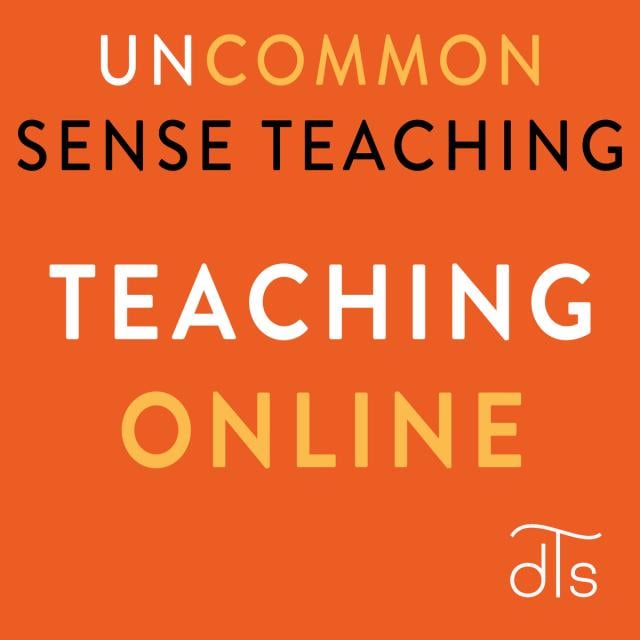MOOC List is learner-supported. When you buy through links on our site, we may earn an affiliate commission.

MOOC List is learner-supported. When you buy through links on our site, we may earn an affiliate commission.
Our course is designed for university professors, vocational instructors, K-12 teachers, coaches, business trainers, parents, and in fact, anyone who is trying to teach concepts or skills online. We're not just talking about traditional academic materials—if you’ve ever considered teaching a course on Udemy, putting up a video series on YouTube, or launching your own educational blog, this course is also for you. An essential and exciting point is that students can learn even BETTER online than they can in the traditional face-to-face classroom. That’s whether you’re teaching synchronously—that is, live, via a platform like Zoom; or you’re teaching asynchronously—that is, any time—by having videos and other teaching materials accessible to students whenever they want.
You can take this course independently from the other two "Uncommon Sense Teaching" courses in this specialization—some of the neuroscience- and cognitive-psychology-based insights we’ll mention here in simple ways are explored more deeply in those other courses. So feel free to take the other two courses in the specialization in conjunction with or after this course. If you’ve already taken the other two courses, you’ll find that this course reviews and extends the practical insights from neuroscience you’ve already received in unexpected new directions. And you’ll find even deeper insights we haven’t covered before.
In TEACHING ONLINE you'll be joining a trio of experienced online instructors who have taught millions in some of the world's most popular online courses. One of our deepest goals for this course is to help YOU to teach others to improve their ability to reach and teach students. We’ve loaded the animations and visuals we've developed for this course online in PowerPoints (licensed under Creative Commons) in the assets under the videos, as well as in the resources section. You can rework these PowerPoints as you wish to reteach this material to your colleagues and students. Your sharing and resharing of this material is one of the best things you can do to help us all move teaching and learning forward to a visionary future. YOU are the foundation—children, adults, and society as a whole can leap ahead because of your desire to learn and spread these new ideas!
Course 3 of 3 in the Uncommon Sense Teaching Specialization.
Syllabus
WEEK 1
Schemas, Motivation, and Teaching Online
A major challenge in teaching—especially teaching online—is how to motivate your students. This week, we’ll introduce the concept of schemas—those frameworks in long-term memory that help form our very identities. As we’ll see, increasing our motivation can involve changing our identities—a process that good online teaching can spur. What is good online teaching? It’s teaching that avoids “checkbox” approaches that seem to satisfy all the requirements, but in reality, produce poor online learning experiences for students. There are many paths past these challenges—dive into the details with us in this week’s videos!
WEEK 2
Popcorn Time! Lessons from the Neuroscience of Movie Watching
Habits form a surprisingly important role in our online teaching. This means we can learn of simple practices for good online teaching—yet ignore them when it comes time to actually implement them. But as we explore this week, there are ways around this challenge. We will also explore how slightly different camera settings and angles, lighting, and above all, sound quality, can have a surprisingly beneficial effect on our students. Finally, we’ll take a plunge into what movies can tell us about how to teach effectively online. As we will discover, theoretical techniques that can work well in traditional classrooms don’t necessarily transfer to the online world!
WEEK 3
Retrieval & Spaced Repetition in Online Learning
Today’s online learners have no time to waste. How can you ensure that students learn as deeply and well as possible, in minimal time? That’s the focus of this week’s videos. We’ll dive into specific popular applications that can enhance students’ ability to retain the material—and also help you see at a glance how well your students are understanding what you are teaching while you are teaching. Our octopus and flocks of birds will also be at hand as metaphors that can help us understand, in surprising ways, how key concepts come together in the brain. As we’ll see, online teaching can give us a great platform to encapsulate key concepts by turning them into tight events that are easier to retrieve.
WEEK 4
Preparing Now and for the Future through Great Online Teaching
One of the great features of the online environment is that it allows you to use simple attentional tricks that are virtually impossible to do in real life. And your friendly moving image on the screen can provide for a social partnership that becomes very real—and very encouraging—for students. This can happen even when you have classes so large that you don’t have the ability to interact individually with your students. But, perhaps surprisingly, attention isn’t ALWAYS important—creativity thrives when attention wanders. There are specific tricks in the online environment to encourage this. Learning also thrives when students can interact with one another—not only because of the exchange of mental models and of schemas, but also due to interaction with familiar faces who share eye gaze. As you’ll see, this gives us important insights related to online discussion forums. Finally, we will learn how learning itself changes the brain in therapeutic, uplifting ways. This means online teaching can provide resilience for societies through good times and bad. All this and more in our final week of Teaching Online!
MOOC List is learner-supported. When you buy through links on our site, we may earn an affiliate commission.
MOOC List is learner-supported. When you buy through links on our site, we may earn an affiliate commission.
